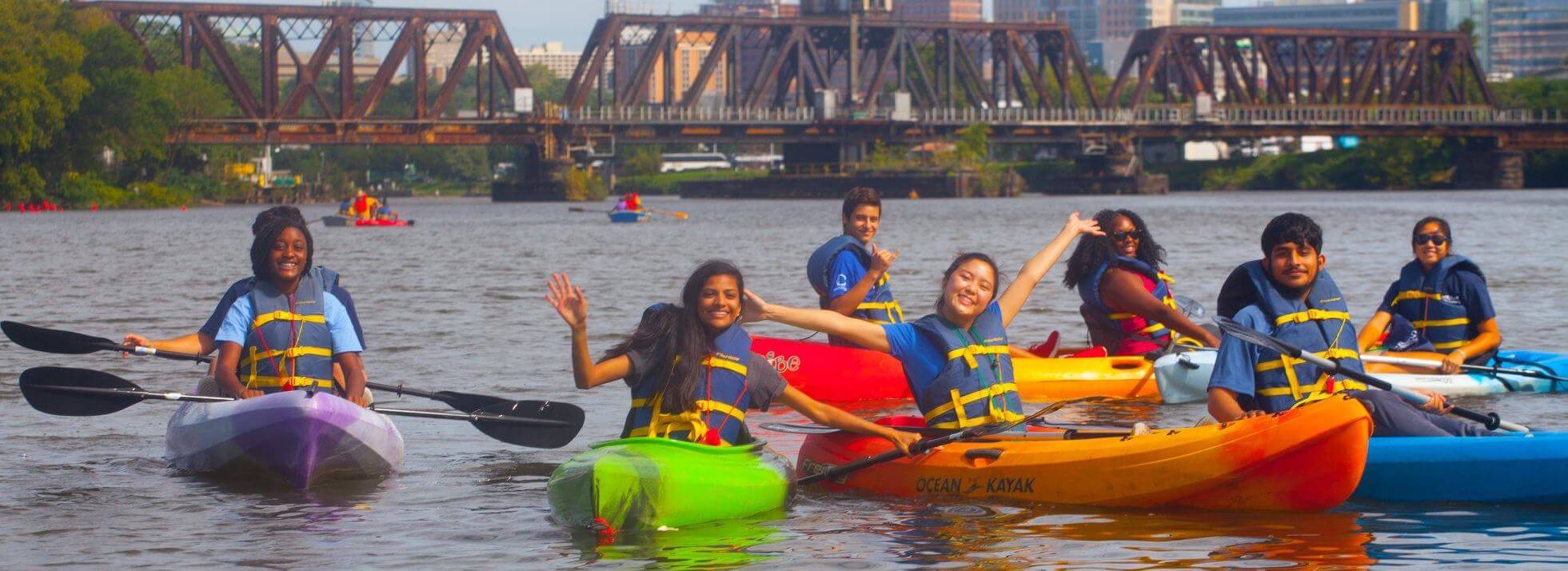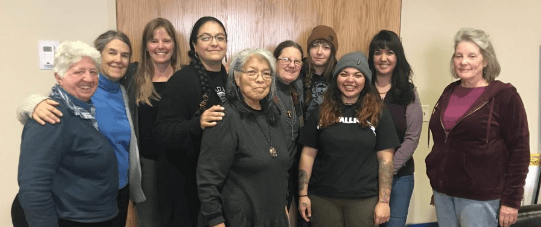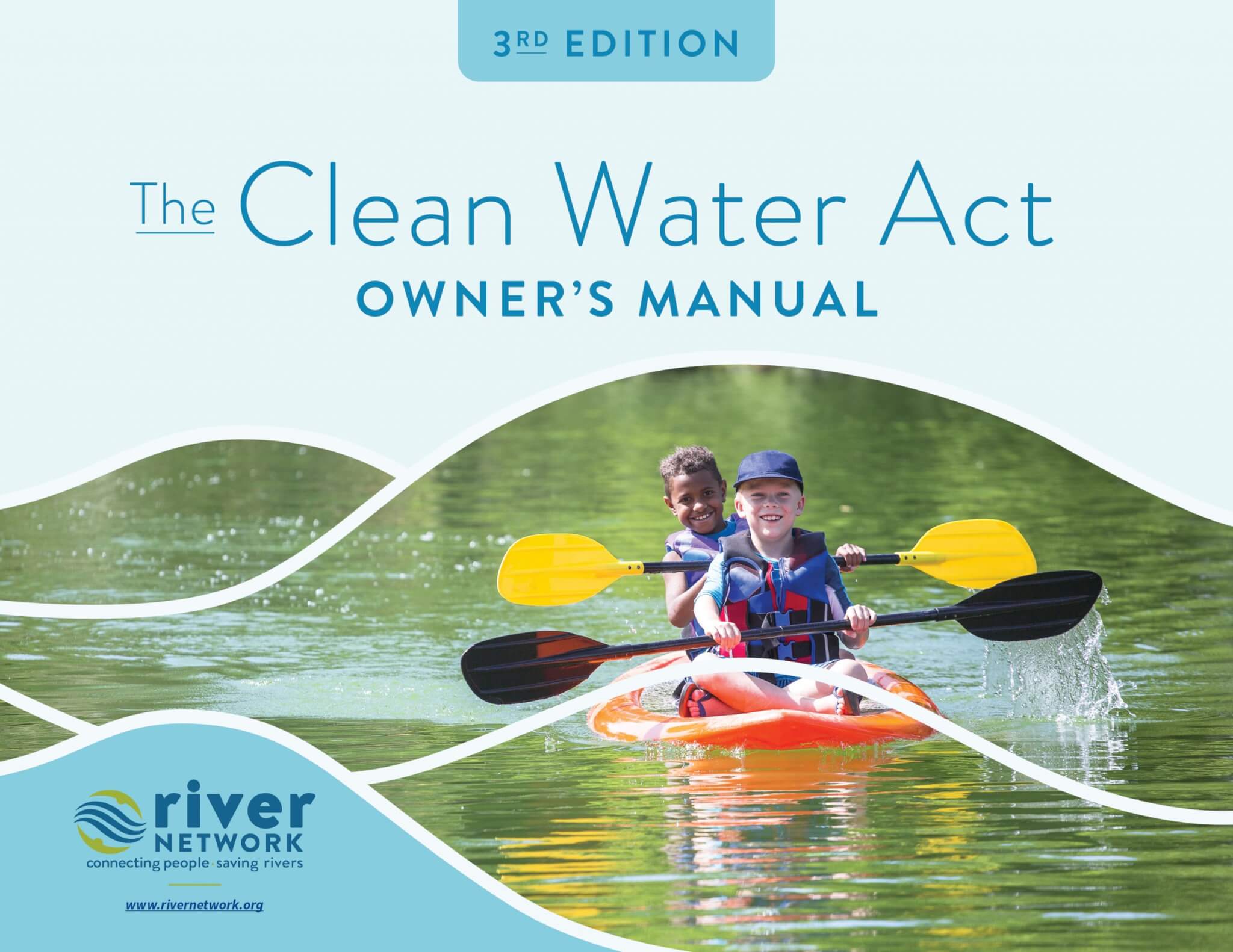The Clean Water Act Owner\’s Manual
The quintessential, transformational tool on how YOU can use the CWA to protect your waters.
The Clean Water Act became law 50 years ago. To commemorate the milestone of this landmark legislation and mark our continued resolve to protect waterways across our country, River Network has updated our transformational Clean Water Act Owner’s Manual. Over the two decades since its original publication, this tool has galvanized local groups, grassroots advocates and diverse stakeholders to protect their local waters by identifying the many ways that every person can track, influence, and change the way the law is implemented at the federal, state, and local levels.
Much has changed since the Manual’s original publication and we are at a fundamentally different time than we were in 1972 when sewage, rendering wastes, and countless industrial chemicals were often dumped directly into rivers.
While those issues have been directly addressed through the Act, there is a need to defend our waters against the longstanding threats of environmental injustices, climate change, and more. The updated Manual provides fundamental tools for interpreting and applying the Act, and highlights challenges of our time and strategies for action.

“This ‘Owner’s Manual’ is our guide to personal involvement in the most important decisions about our rivers, streams, wetlands, lakes and estuaries.”
– President Jimmy Carter
River Network strives to use inclusive language across our website, publications, and other communications. The Clean Water Act, however, as a law written in 1972, includes some language such as “Indian” and “citizen” in specific places. We have used these words in the Manual where necessary for clarity and consistency with the text of the Act. We acknowledge that terms like “citizen” do not fully capture the constituent of people who live in the United States and care about their waters, nor is “Indian” the preferred term of many Native American communities. We use this language only for clarity within specific sections of the Act, not to exclude anyone.
Head to YouTube for a video walk-through of the Manual with our staff.
Questions to Ask as We Utilize the Clean Water Act
The truth is that the Clean Water Act has been implemented differently, and sometimes inequitably, across communities. Going forward it’s important to center equity and climate change when we harness the Clean Water Act to protect our waters and communities. We must question and challenge whether all communities are protected adequately and equitably, and consider climate in new and critical ways. As you use the Manual, we offer these questions to guide your work:
Centering Equity
- Are the communities most affected meaningfully involved in the public processes? Has their knowledge informed the process? Are you partnering with them?
- Are the opportunities for public participation genuine or are they simply boxes to check?
- Are the standards developed with the most sensitive uses and user groups in mind?
- Are the permits protecting the most sensitive uses and user groups?
- Have the most polluted waterways been prioritized for enforcement and remediation?
- Are the regulations, guidance documents, plans, permits, and implementation plans developed with implicit biases? How can we identify and rectify them?
Climate Awareness
- Are standards and permits developed with the most current precipitation, streamflow, and temperature data?
- Are permits taking into account priorities for protecting riparian and coastal areas (wetlands, dunes, barrier islands, peninsulas) due to their ability to attenuate flooding and sea level rise?
- Are plans and permits taking into account the need to maximize green infrastructure and limit impervious cover?
- Are permits taking into account increased likelihood of extreme events that can blow out treatment or settlement ponds?
Featured Communities
In an effort to bring the detailed and technical components of the CWA to life, we share five community stories throughout the Manual.
Below, dive into longer versions of these stories to get the full picture of their work and how you might replicate their successes for your own waters.

Learn how the Spokane Tribe of Indians is using the Clean Water Act to protect their ancestral waters and ways of life.
Learn how Communities for Clean Water is utilizing the tools of the Clean Water Act to call out violations, enforce pollution controls, push for appropriate water quality standards, and more.
Learn about efforts to protect Bloody Run Creek from CAFO pollution, including through TMDLs, NPDES permits, and more, and the loopholes that have made advocates’ work challenging.
Gulf South
Learn how Healthy Gulf, in long-term partnership with residents of Plaquemines Parish, Louisiana, used the Clean Water Act to hold a petcoke polluter responsible, resulting in a cleaner Mississippi River.
Learn how students and volunteers are filling water monitoring gaps to track combined sewer outfall contamination and advocate for protections with Bartram’s Garden.
The Clean Water Act in the News
The Act, like any law, is subject to change. Check this space often for timely updates on any amendments, court cases, and updates to the Act that may not otherwise be reflected in the Owner’s Manual.
- 5/21/24: Sackett v. EPA: The State of Our Waters One Year Later, from Protect Our Waters Campaign
- 4/23/24: America the Beautiful Freshwater Challenge announced a partnership over 160 state, local, non-profit, and business organizations committed to “Conserve and Restore America’s Rivers, Lakes, Streams, and Wetlands sets a new national goal to protect, restore, and reconnect 8 million acres of wetlands and 100,000 miles of our nation’s river and streams.”
- 10/3/22: “Robert Redford: Supreme Court should not dishonor 50th anniversary of Clean Water Act,” Op-Ed in USA Today
- 9/29/22: Upstream, Downriver film
- 9/20/22: House Transportation and Infrastructure Committee Hearing on “The Clean Water Act at Fifty: Highlights and Lessons Learned from a Half Century of Transformative Legislation”
- 9/19/22: “What You Need to Know About Sackett v. EPA,” from NRDC
- 6/24/22: The latest on the Waters of the United States definition, from Harvard’s Environmental & Energy Law Program.
- 6/1/22: EPA’s Proposed Clean Water Act Section 401 Water Quality Certification Improvement Rule






